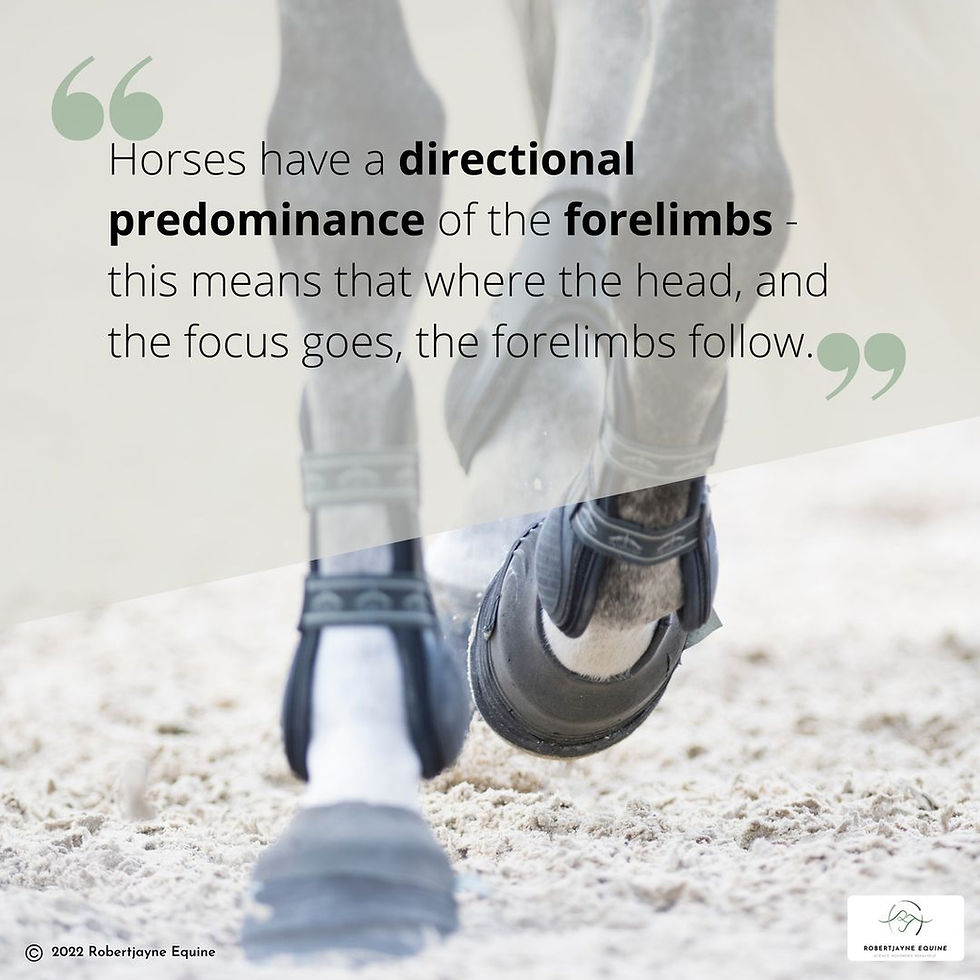Directional predominance - forelimbs.
- Nancy Ellison-Murray
- Sep 26, 2022
- 1 min read
Horses show strong indicators of being predominant in forelimb directional influence - therefore, the forelegs tend to define the direction of travel ,and respond rapidly to the direction of focus from an innate biological response primed for survival.
Where the focus, eyes, and head of the horse goes - the forelegs follow, and the hindlegs move in the opposite direction to allow acceleration to occur, rapidly.
Behaviors that indicate a predominance of forelimb influence relating to issues with turn, deceleration, & acceleration can be:
Swerving, Shying, Rearing, or drifting.
This is why when we begin to train stimulus control (the response to aids) of turn & deceleration, and the allowance of acceleration with the expectation of straightness (the following of the intended line) we must primarily focus on our influence of the forelegs to reliably, and appropriately train the response, the straightness and to train our expectations of direction.
For the horse to understand aids, that relate to the direction of travel, they must understand how to turn in response to them - which is the process of abduction, and adduction of the forelimbs, creating a lateral step, ie. a turn.
Straightness, direction of travel, and subsequently lateral flexion therefore is improved by having a smooth, clear, consistent response to the aids of turn on the forelimbs, and NOT on the lateral movement of the thoracic arch or the hindquarters.
#horses #horsewelfare #rjequine #equinebehaviour #horselearning #equestrian #equineethology #horsetrainersofinstagram #setthemupforsucess #horseridersofinstagram #horseridersofaustralia #horsebehaviour #confusionfreehorsetraining #equinewellbeing #horsesofinstagram #robertjayneequine #horsesoffacebook #horsetraining #equitationscience #equine #equinescience #equinebiomechanics #BiologyMatters


Comentários